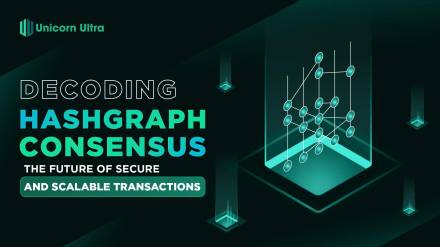Table of Contents
Blockchain technology has revolutionized various industries, offering transparency, security, and decentralization. Within this realm, two essential terms often arise: testnet and mainnet. Although they may sound similar, they serve distinct purposes and play crucial roles in the development and deployment of blockchain projects. This blog post aims to demystify the differences between testnet and mainnet, shedding light on their significance and how they contribute to the overall blockchain ecosystem.
What is testnet?
Definition of Testnet
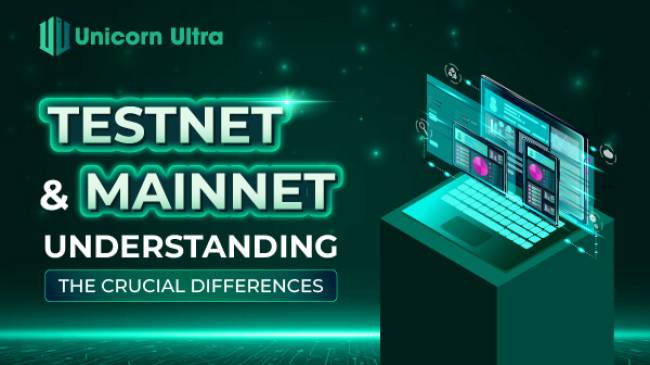
Testnet refers to a testing network that developers use to experiment, refine, and evaluate the functionalities and features of a blockchain project. It acts as a sandbox environment separate from the mainnet, allowing developers to test their code, smart contracts, and decentralized applications (dApps) without any real financial consequences or risks. Testnet networks mimic the properties of the mainnet, enabling developers to simulate real-world conditions in a controlled and safe environment.
Importance of Testnets
Testnets are invaluable for blockchain developers due to several reasons. Firstly, they provide a platform for developers to identify and rectify bugs, vulnerabilities, and other issues in their code or dApps before deploying them on the mainnet. This ensures that the final product is reliable and secure. Secondly, testnets foster collaboration within the developer community, as they can share their projects, code, and ideas with others for feedback and improvements. Lastly, testnets allow developers to experiment with new features and updates, test scalability, and assess the overall performance of their projects.
Working and Use Cases of Testnet
Testnets typically utilize test tokens, which hold no real-world value and can be obtained easily. These tokens are used for testing transactions, deploying smart contracts, and interacting with dApps within the testnet environment. Developers can create multiple accounts and simulate different scenarios to validate the functionalities and performance of their blockchain project. Additionally, testnets enable developers to conduct stress tests, check the interoperability of different protocols, and assess the network's overall robustness.
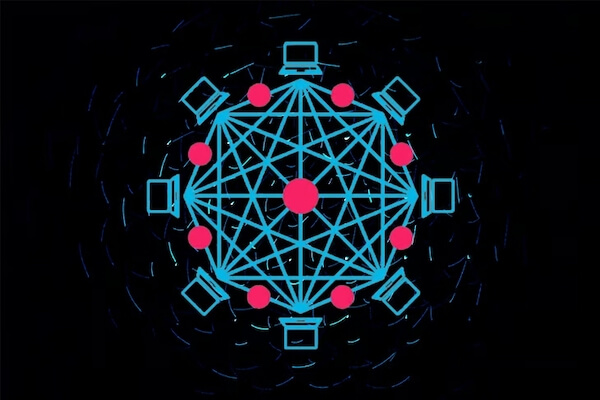
Testnets find applications in various use cases, such as:
- Smart Contract Testing: Developers can test the functionality and security of smart contracts before deploying them on the mainnet. This ensures that contracts operate as intended and vulnerabilities are identified and addressed.
- DApp Development: Testnets provide a platform for developers to build, test, and debug decentralized applications without incurring real financial risks. This allows for iterative development and refinement.
- Protocol Development: Testnets are crucial for testing new blockchain protocols and consensus mechanisms. They provide an environment to assess the protocol's performance, security, and scalability before its deployment on the mainnet.
Pros and cons of using Testnet
Using a testnet, which is a separate blockchain network designed for testing and development purposes, comes with its own set of advantages and disadvantages. Let's explore the pros and cons of using a testnet:
Pros:
- Risk-Free Environment: Testnets provide a risk-free environment for developers and users to experiment with new blockchain applications and smart contracts. Since testnet tokens have no real-world value, any mistakes or bugs in the code won't result in financial losses.
- Cost Savings: On a live mainnet, executing transactions and deploying smart contracts incurs real transaction fees. In contrast, testnets use test tokens, so developers can freely experiment without spending real money.
- Rapid Iteration: Developers can quickly iterate and test multiple versions of their applications on a testnet. This agility allows them to find and fix bugs, optimize performance, and refine the user experience more efficiently.
- Isolated from Mainnet Risks: Testnets are isolated from the risks and potential issues that may arise on the mainnet. This separation ensures that bugs or vulnerabilities discovered during testing don't affect the production environment.
- Realistic Simulation: Testnets aim to mimic the mainnet environment as closely as possible, allowing developers to test applications under real-world conditions without impacting the actual blockchain.
- Open Participation: Testnets are usually open for public participation, which encourages collaboration, feedback, and bug reporting from the broader community. This helps in improving the overall quality of the project.
Cons:
- Limited Real - World Data: Testnets lack the scale and real-world data of the mainnet. In some cases, performance and behavior on the testnet may not fully represent what will occur on the mainnet.
- Centralization and Security: Some testnets are less decentralized and secure than their mainnet counterparts. The focus is primarily on development and testing rather than securing the network.
- Token Value Differences: Testnet tokens have no real-world value, which means certain market behaviors or interactions cannot be accurately tested on a testnet.
- Testnet Resets: Testnets are occasionally reset or upgraded, which can result in the loss of data or the need to redeploy smart contracts.
- Network Stability: Testnets may experience intermittent downtime or instability due to upgrades or maintenance, impacting the testing process.
Despite these drawbacks, testnets remain crucial for the development and testing of blockchain applications. They provide an essential sandbox for developers to innovate, iterate, and improve their projects before deploying them to the mainnet, enhancing the overall reliability and security of blockchain ecosystems.
What is Mainnet?
Definition of Mainnet
Mainnet refers to the live and operational blockchain network that hosts real transactions, smart contracts, and user interactions. It represents the final and production-ready version of a blockchain project where tokens hold real-world value. Unlike testnets, mainnet networks are used by end-users, businesses, and organizations for actual transactions and operations.
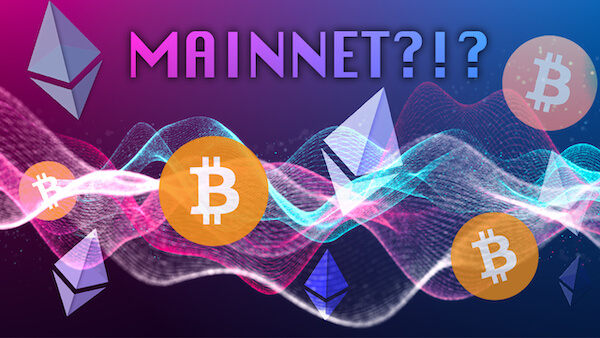
Importance of a Mainnet
Mainnet networks are of utmost importance as they represent the culmination of the development process. A mainnet launch signifies the readiness of a blockchain project for real-world adoption. It is the stage where tokens have value, and users can interact with the system to perform various activities such as sending and receiving transactions, executing smart contracts, and participating in the blockchain's consensus mechanism.
Working of a Mainnet
In a mainnet, transactions and operations are performed using real tokens or cryptocurrencies. The network's consensus mechanism, whether it is proof-of-work (PoW), proof-of-stake (PoS), or any other consensus algorithm, is active and securing the network. Users can interact with dApps, make payments, and participate in governance processes, contributing to the overall functionality and sustainability of the blockchain ecosystem.
Mainnet Use Cases
Mainnets are utilized in a wide range of use cases across various industries. Some common examples include:
- Payments and Remittances: Mainnet networks enable seamless and secure peer-to-peer transactions, making them ideal for payment solutions and cross-border remittances.
- Supply Chain Management: By utilizing mainnets, supply chain management can benefit from increased transparency, traceability, and efficiency. Smart contracts on the mainnet can automate and validate supply chain processes.
- Decentralized Finance (DeFi): Mainnet networks provide the infrastructure for DeFi applications such as lending platforms, decentralized exchanges (DEXs), and yield farming, offering users direct access to financial services without intermediaries.
How to switch between Testnet and Mainnet?
Switching between testnet and mainnet involves connecting to different blockchain networks, each with its own unique network identifier and infrastructure. Here's how to switch between testnet and mainnet on popular blockchain networks like Ethereum:
Ethereum:
- Using Wallets: Most Ethereum wallets, such as MetaMask, allow you to switch between testnet and mainnet easily. In your wallet's interface, you'll find a network selection dropdown or a switch that allows you to choose the desired network. Select "Ethereum Mainnet" for the mainnet or the testnet of your choice (e.g., "Rinkeby," "Ropsten," "Kovan," etc.) for the testnet.
- Custom RPC: If your wallet does not directly support the testnet you want to switch to, you can add a custom RPC (Remote Procedure Call) URL. Find the RPC endpoint for the testnet you want to connect to, and add it as a custom network in your wallet settings.
Binance Smart Chain (BSC):
- Binance Chain Wallet: If you're using the Binance Chain Wallet browser extension, you can switch between mainnet and testnet by selecting the network from the dropdown menu.
- Custom RPC: For some testnets, you may need to add a custom RPC. Follow the same process as described for Ethereum wallets, and add the custom BSC testnet RPC URL.
Polygon (previously Matic):
MetaMask: In MetaMask, click on the network name at the top center of the interface. A dropdown menu will appear, allowing you to switch between mainnet and various Polygon testnets (e.g., "Mumbai").
Other Blockchains:
For other blockchain networks, the process is generally similar. Look for options to change networks within your wallet or add custom RPCs if the testnet you want to use is not listed by default.
It's essential to switch to the correct network when conducting transactions or interacting with dApps. Transactions made on a testnet are not real and have no value, while transactions on the mainnet involve real assets and transaction fees.
Remember that some wallets may require you to have a small amount of the testnet's native tokens to use it. For example, you may need some test Ether (ETH) to use Ethereum testnets like Rinkeby or Ropsten. You can obtain test tokens from testnet faucets, which are services that provide free test tokens for developers and users to experiment with on testnets.
What are differences between Testnet and Mainnet?
While testnet and mainnet share similarities, they have crucial differences that are essential to understand. Some key distinctions include:
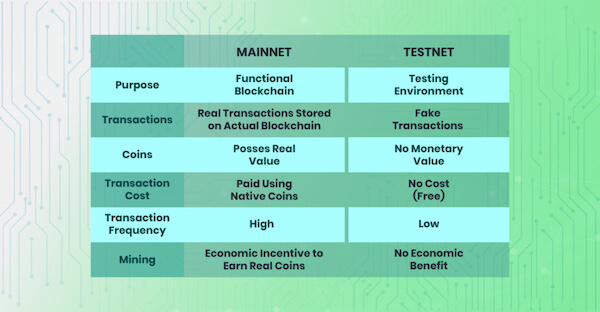
- Purpose and Functionality: Testnet focuses on development, testing, and refining blockchain projects, while mainnet is the live production network used by end-users for real transactions.
- Network Infrastructure: Testnets often have lower computing power and security compared to mainnets. Mainnets require robust infrastructure to handle real-world demands.
- Token Value and Economy: Testnet tokens hold no real-world value and can be obtained easily. Mainnet tokens have actual value and are used for real transactions, investments, and economic activities.
- Development Stage and Risk: Testnets are used in the early stages of development, where risks and bugs are identified and resolved. Mainnets represent the mature and production-ready stage, where users expect stability and security.
- User Experience and Accessibility: Testnets are primarily used by developers and technical users, whereas mainnets target a broader audience, including end-users and businesses.
Understanding the differences between testnet and mainnet is crucial for blockchain developers, investors, and users. Testnets provide a controlled environment for developers to test and refine their ideas, while mainnets serve as the live production network where real transactions and user interactions take place. By comprehending the distinctions and utilizing testnets effectively, developers can ensure the security, scalability, and overall success of their projects when they transition to the mainnet. With the continued growth of the blockchain industry, the distinction between testnet and mainnet will remain essential for innovation and progress. Let's go with Unicorn Ultra to follow the latest information on the market.




